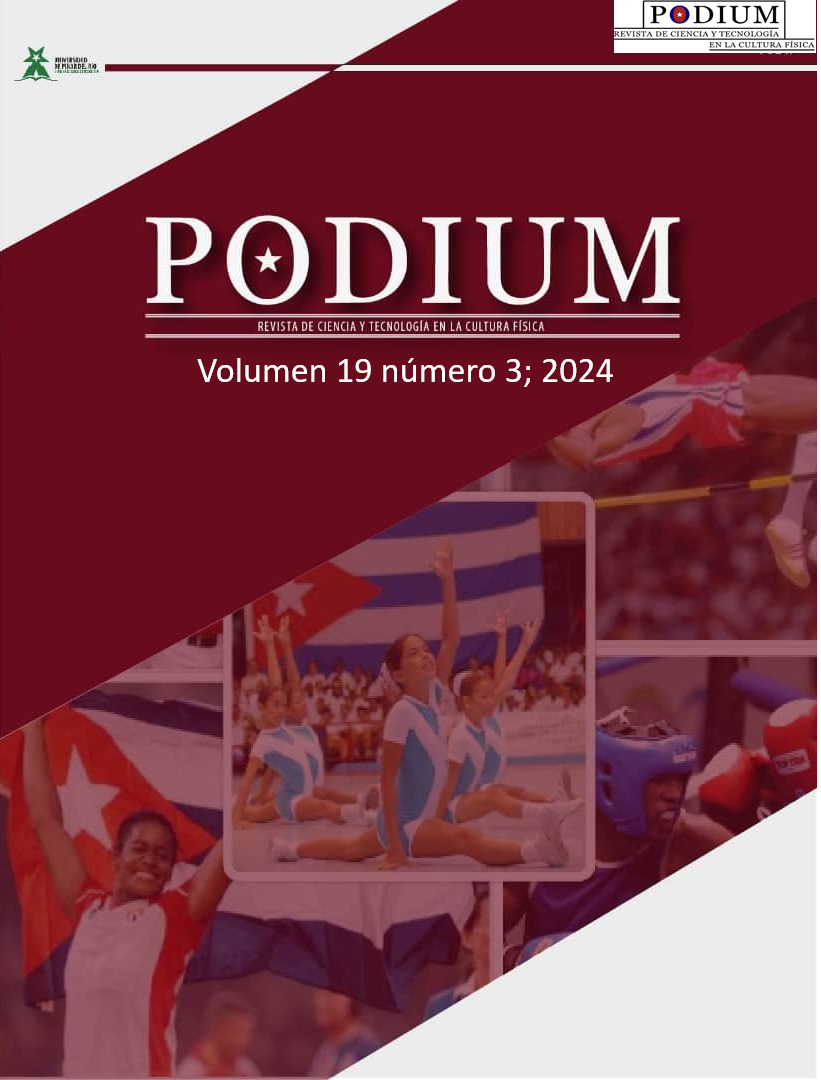Didactic Strategy for the Educational Inclusion of Children with Intellectual Disabilities in Physical Education
Main Article Content
Abstract
Mild intellectual disability is a condition that affects the higher mental abilities of a person, limiting their ability to process, store and retrieve information. The research presented here arises from observing that a student with mild intellectual disability does not participate in the activities programmed in Physical Education because he/she presents difficulties in motor skills and competences, manifested behaviors in the different contexts where she develops; therefore, the objective was to propose a didactic strategy for the educational inclusion of students with intellectual disability in Physical Education classes of Second Year of General Basic Education, Elementary level, in the Unidad Educativa República del Ecuador of the city of Otavalo. It has a scope that starts from the exploratory, descriptive level, until reaching an explanation of the phenomenon under investigation. The results reveal the insufficient treatment to the inclusion of students with Mild Intellectual disability from the Corporal Expressive Communicative Practices in the Physical Education class, the didactic strategy shown is a way that guarantees a better understanding, enjoyment and guarantee of well-being in society in students with this kind of disability. The proposal is valued by the specialists as very adequate and according to the system, it is a very useful tool for the inclusion of students with this disability in the Physical Education lesson, the didactic strategy shown is a way that guarantees a better understanding, enjoyment and guarantee of well-being in society in students with this intellectual disability.
Downloads
Article Details

This work is licensed under a Creative Commons Attribution-NonCommercial 4.0 International License.
References
Aldeán-Riofrío, M. I., Román-Celi, G. E., Andrade-Carrión, A. L., González-Sarango, J. M., Aldeán-Riofrío, M. I., Román-Celi, G. E., Andrade-Carrión, A. L., & González-Sarango, J. M. (2023). Recursos Didácticos para desarrollar la expresión corporal en niños de 5 a 6 años. Episteme Koinonía. Revista Electrónica de Ciencias de la Educación, Humanidades, Artes y Bellas Artes, 6(11), 4-16. https://doi.org/10.35381/e.k.v6i11.2299
Basabe, M. P., Melgarejo, S. A., García, C. E., Géliga, E. V., & Ávila, N. D. (2022). Folleto de juegos predeportivos correctivos compensatorios para educandos con discapacidad intelectual/Booklet of compensatory corrective pre-sports games for students with intellectual disabilities. PODIUM - Revista de Ciencia y Tecnología en la Cultura Física, 17(3), Article 3. https://podium.upr.edu.cu/index.php/podium/article/view/1334
Carriedo, A., Méndez-Giménez, A., Fernández-Río, J., & Cecchini, J. A. (2020). Nuevas posibilidades y recursos para la enseñanza de la expresión corporal en educación física: Internet y los retos virales. Retos, 37, 722-730.
Castillero Mimenza. (2024). Tipos de discapacidad intelectual (y características). https://psicologiaymente.com/clinica/tipos-discapacidad-intelectual
Chikuambi, A. C., Perdomo Blanco, L., & Carrera Morales, M. (2023). PREPARACIÓN A DOCENTES PARA LA INCLUSIÓN EDUCATIVA DE ESCOLARES CON SÍNDROME DE DOWN EN ANGOLA. RETOS EN TIEMPOS DE COVID-19. 19(92), 80-86.
Clavijo Castillo, R. G., & Bautista-Cerro, M. J. (2020). La educación inclusiva. Análisis y reflexiones en la educación superior ecuatoriana. https://www.redalyc.org/journal/4677/467761669009/html/
Crespo, J. M. A., Martín, M. M., & López, I. G. (2021). INFLUENCIA DE LA EXPRESIÓN CORPORAL EN EL DESARROLLO DE LAS HABILIDADES SOCIOAFECTIVAS EN EDUCACIÓN SECUNDARIA. Movimento, 26, e26080. https://doi.org/10.22456/1982-8918.104634
González, S. R. A., Díaz, N. T., & Gómez, N. P. (2019). LOS MODELOS DE EDUCACIÓN PARA LA PAZ Y LA ESCUELA. Revista Varela, 19(53), Article 53. https://revistavarela.uclv.edu.cu/index.php/rv/article/view/54
Jiménez, L. T., Flores, D. F. C., & Santamaría, D. R. A. (2022). Análisis del tratamiento a personas con Necesidades Educativas Especiales, analizado desde las competencias docentes. Revista Conrado, 18(89), Article 89. https://conrado.ucf.edu.cu/index.php/conrado/article/view/2733
Martínez-Morales, J. R., Martínez-Gallego, R., & Ramón-Llin, J. (2024). Efectos de una carrera inclusiva sobre las actitudes de los niños hacia estudiantes con discapacidad en educación física. Retos, 56, 1056-1065.
Paquisha, C. (2010). LEY DEL DEPORTE, EDUCACIÓN FÍSICA Y RECREACIÓN. Quito.
Patajalo-Guambo, A. I., Vargas-Cuenca, G. M., Ávila-Mediavilla, C. M., & Bayas-Machado, J. C. (2020). La danza en el desarrollo de las habilidades motrices básica en edades escolares. Polo Científico, 5(11), 12-28.
Pérez Rodríguez, L. A., Escalante Candeaux, L., & Gómez Valdés, A. (2021). Acciones metodológicas para la inclusión educativa de educandos con discapacidad intelectual mediante el parakarate. Revista PODIUM, 16(1), 4-16.
Proenza-Pupo, J. R. (2021). Educación Física inclusiva: Modelo y paradigma. Revista científica especializada en Ciencias de la Cultura Física y del Deporte, 18(47), 145-160. https://deporvida.uho.edu.cu/index.php/deporvida/article/view/662
Quiñones, J. A., & Romero Melo, J. E. (2020). Exploraciones sobre las concepciones y prácticas del cuerpo y la comunicación no verbal: La escuela, el proceso de aprendizaje y el aula de lengua extranjera. Revista Educación. https://doi.org/10.15517/revedu.v44i2.38945
Rojas-Avilés, F., Sandoval-Guerrero, L., & Borja-Ramos, O. (2020). Percepciones a una educación inclusiva en el Ecuador. Revista Cátedra, 3(1), 75-93.


